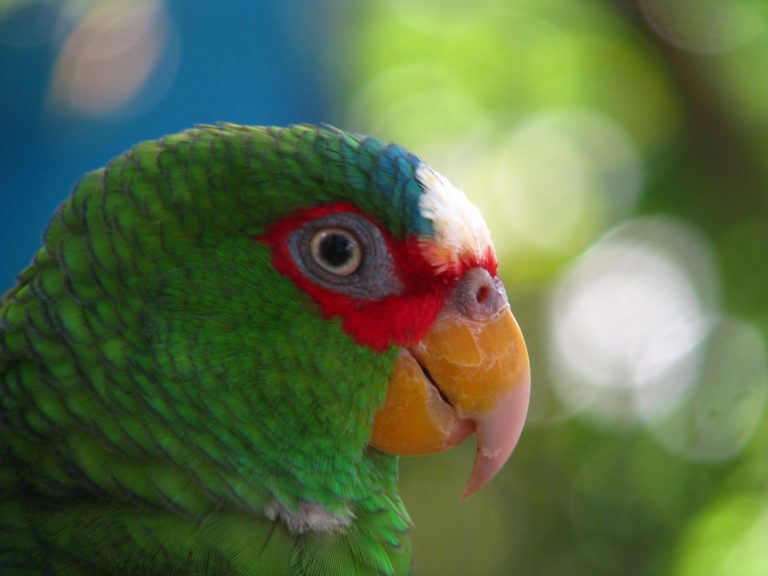White-fronted Amazon Amazona albifrons
Taxonomy
Scientific name:
Amazona albifrons
Family:
Psittacidae
Genus:
Amazona
Species:
Albifrons
Common names:
White-fronted Amazon
Biology
Morphology:
The white-fronted amazon, about 25 to 28 cm long, is the smallest of the Amazon parrots. They are named for the white patch of feathers on their forehead. They have mostly green plumage with blue colouring on their outspread wings. Males and females can easily be distinguished by external appearance (sexual dimorphism): Males have bright red feathers on their shoulders, while females have green shoulders.
Reproduction:
The white-fronted amazon nests in tree cavities. Their breeding season starts in February and ends in June/July. The female will lay an average of 3 to 4 white eggs. Eggs are incubated for about 26 days and chicks leave the nest at the age of about 60 days from hatching.
Diet:
They feed on fruits, seeds, nuts, grains, flower buds and sprouting leaves.
Ecology
Range:
This species occurs from the south of Mexico to the west of Costa Rica. They are frequently seen in Macaw Mountain.
Habitat:
They are seen in a variety of different habitats from wet regions such as rainforests, to drier areas such as savannas.
Threats
Locally in Honduras there is a lot of “pet trade” pressure on this species, though populations appear strong.
IUCN Red List: Least concern.

